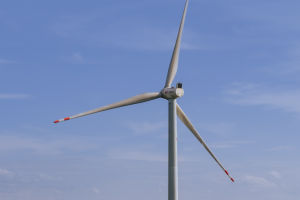Skyborne Vapor Trails
When airplanes fly in the sky, they often leave trails that are typically seen as white streaks or clouds.
These trails are formed due to the interaction between the exhaust emissions from aircraft engines and the water vapor in the atmosphere.
This phenomenon is commonly known as "contrails" or simply "airplane trails". Although this phenomenon is quite common in our daily lives, the scientific principles behind it are quite fascinating.
Firstly, we need to understand the basic principles behind the formation of contrails. When aircraft engines burn fuel, the exhaust gases contain water vapor. This water vapor is emitted into the surrounding atmosphere in the form of hot gases.
The surface of the aircraft's fuselage is usually cooler than the surrounding air, causing the emitted hot gases to lower in temperature as they mix with the surrounding air. When the temperature drops below the saturation point of water vapor, the water vapor condenses into tiny water droplets or ice crystals, forming clouds or contrails.
Secondly, the formation of contrails is also influenced by atmospheric humidity and temperature. In conditions of higher atmospheric humidity, the water vapor emitted by aircraft is more likely to interact with the surrounding air, forming visible trails. In drier environments, contrails may dissipate more quickly or may not be easily observed at all.
Additionally, the shape and duration of contrails are also influenced by factors such as the speed, altitude, and type of aircraft. The faster the speed of the aircraft, the longer the contrails; and at higher altitudes, where temperatures are lower, water vapor is more likely to condense, resulting in more prominent contrails.
Contrails are typically categorized into three types: short-lived contrails, persistent contrails, and persistent spreading contrails.
1. Short-lived contrails: These contrails typically appear as short white lines along the aircraft's flight path, resembling the tail of a comet.
They dissipate almost as quickly as the aircraft moves, usually within a few minutes. This is because the aircraft passes through relatively dry air with only a small amount of moisture. The quickly formed ice crystals in the contrail quickly revert to vapor, causing the contrail to disappear.
2. Persistent contrails: Long crisscrossing trails are often visible in the sky on clear days. They can persist for several hours after the passage of an aircraft, indicating that the aircraft has passed through very humid air containing a significant amount of water vapor.
3. Persistent spreading contrails: These contrails linger in the air for a short time before gradually evolving into fuzzy lines and spreading to cover a wider area as artificial clouds. The formation of such contrails is mainly due to meteorological changes (high-altitude winds).
Despite contrails being a natural phenomenon, they have sparked discussions regarding environmental and climatic implications. Some studies suggest that large volumes of aircraft contrails may affect cloud cover and precipitation patterns in the atmosphere, thereby influencing Earth's climate.
Additionally, emissions such as carbon monoxide and nitrogen oxides from aircraft contrails may contribute to atmospheric pollution to some extent.
In conclusion, the formation of aircraft contrails in the sky is a natural phenomenon influenced by various factors including aircraft exhaust emissions, atmospheric humidity and temperature, aircraft speed, and altitude.
While contrails are common in our daily lives, a deeper understanding of their formation principles and impacts can help us better comprehend atmospheric environments and climate change.


